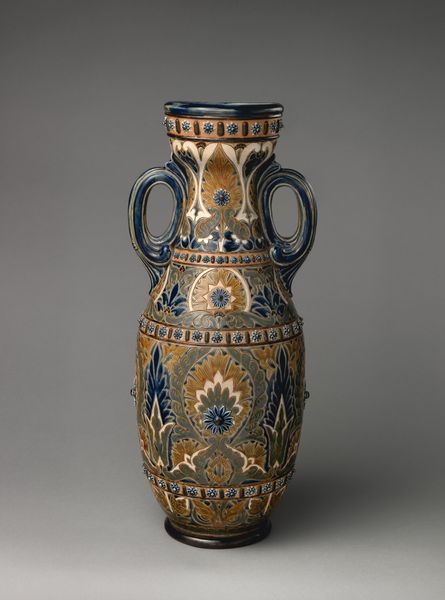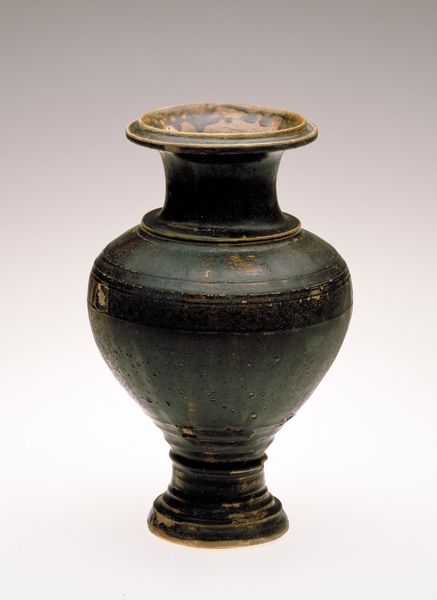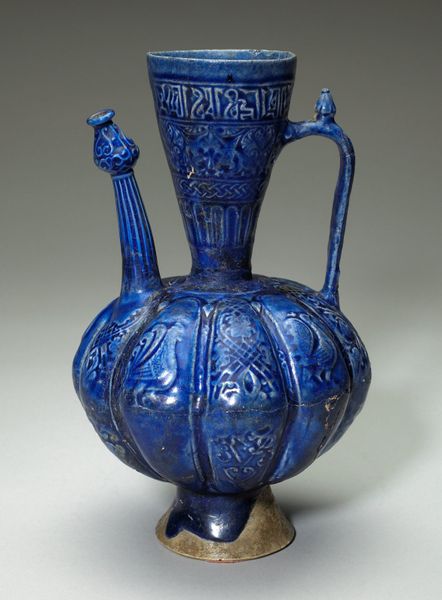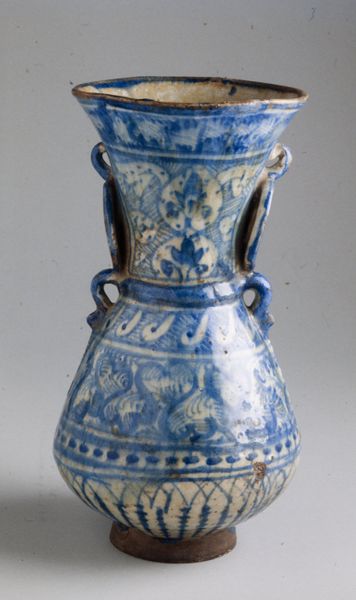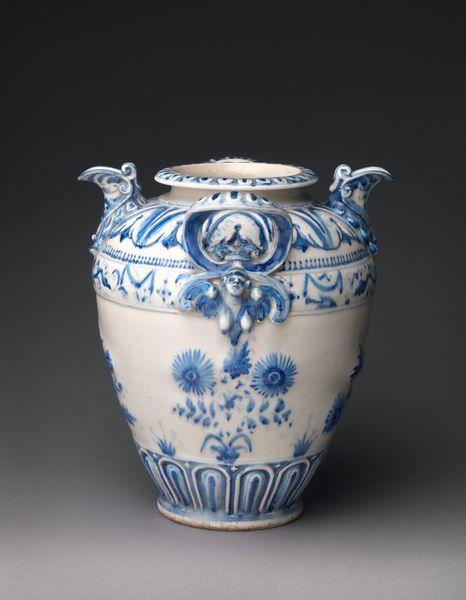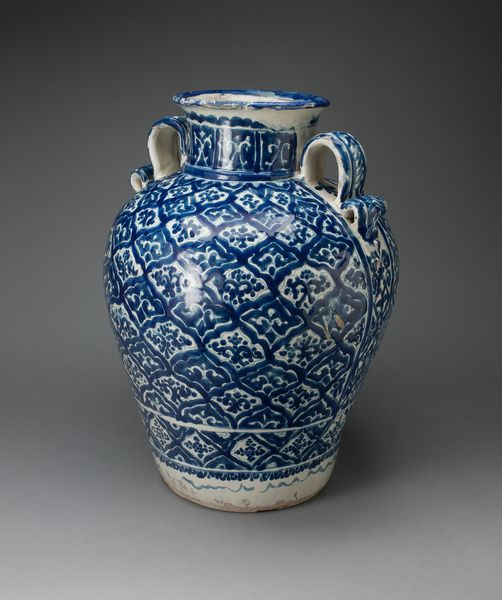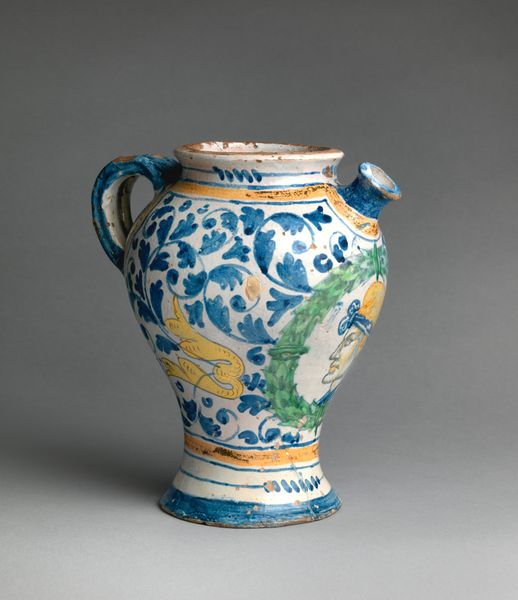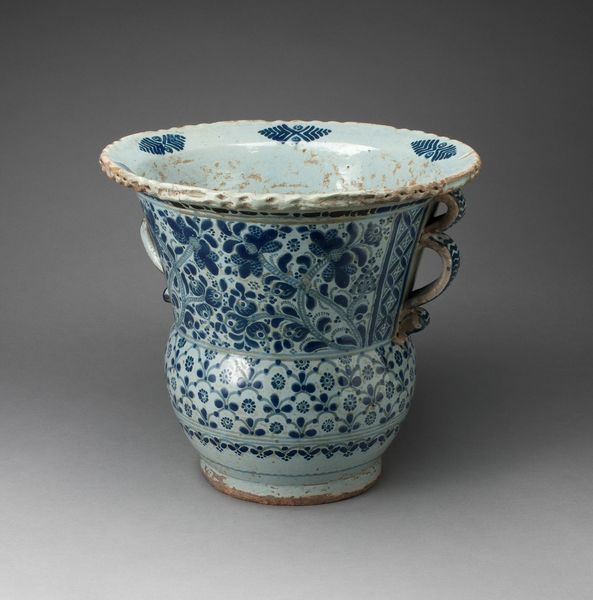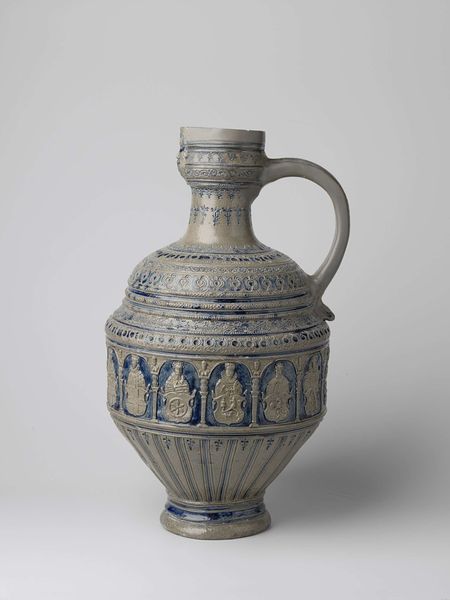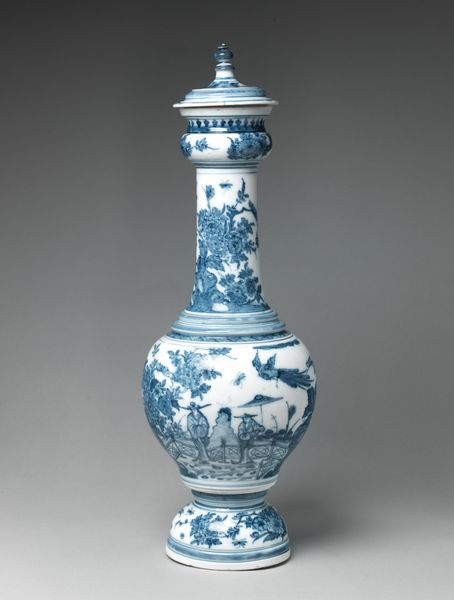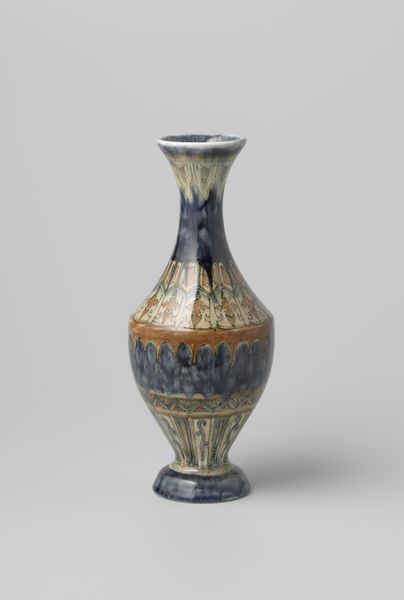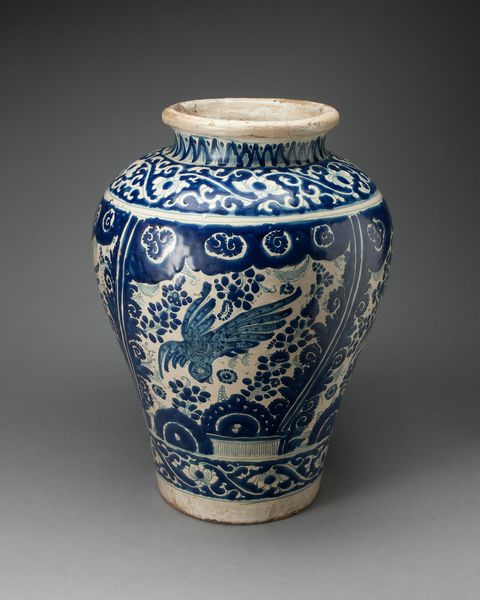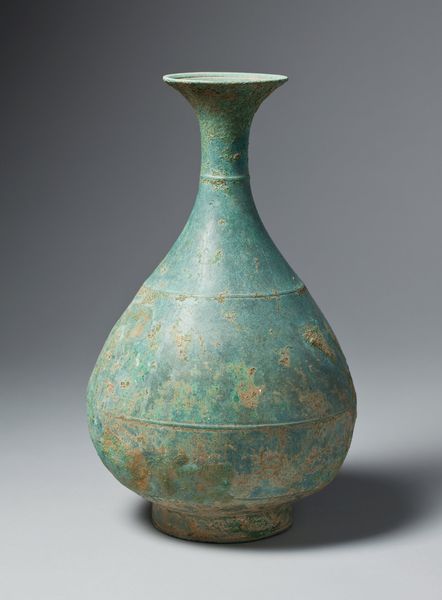
ceramic, sculpture
#
ceramic
#
form
#
11_renaissance
#
sculpture
#
ceramic
#
italian-renaissance
Dimensions: Overall (confirmed): 12 1/4 x 11 1/4 x 8 15/16 in. (31.1 x 28.6 x 22.7 cm)
Copyright: Public Domain
Curator: Looking at this exquisite vase crafted by della Robbia between 1495 and 1505, what captures your attention? Editor: That remarkable cobalt blue glaze contrasted with the gilding is the first thing that strikes me. The colour seems almost industrially produced, even though it's centuries old, and I wonder about the skill required to consistently achieve such a vibrant, durable surface. Curator: Absolutely. Beyond the aesthetic appeal, consider the historical implications of such luxury items. Whose table was graced by this vase? The powerful Medici, perhaps? And what did it contain? Its existence speaks volumes about access and privilege within the patriarchal Renaissance society. Editor: The medium, the ceramic itself, interests me. These artisans were highly skilled in material production – choosing and preparing the clay, understanding firing techniques and the chemistry of pigments. There’s an art in controlling heat, earth and minerals to arrive at something of refined beauty. This pushes at the divide between craft and art. Curator: True. And that division itself is ripe for interrogation. We must acknowledge the diverse labor, often uncredited, of the artisans who brought designs such as this to life. What can its repeated forms, this constant pursuit of balance, suggest? Can we tie this back to early modern rituals or belief systems? Editor: Considering that balance, the handles, which look like stylized serpents, provide both functional support and ornamental flourish. And note how they interrupt the roundness. The gilding draws out these elements as points of contact, underscoring that the purpose goes beyond holding flowers, but involves touching and carrying, implying an intimacy of display within an opulent lifestyle. Curator: The serpents indeed resonate with a much deeper story of religion and morality, playing into societal norms for those allowed access and participation within a time of heightened cultural reinvention and a reframing of identities. It forces questions about how we perceive power structures even now. Editor: Looking at it that way, these objects serve as important clues to our understanding of a labor history—the physical tasks, learned knowledge, and economic conditions that made this dazzling blue vase and everything that is symbolized materially possible. Curator: A potent reminder that engaging with such historical pieces is never merely about admiration but should drive critical reflection, and to see within these gorgeous artifacts more nuanced reflections about access, participation and power for all. Editor: Agreed. The interplay between labor, material, skill, and luxury really pushes me to re-evaluate the role these craftspeople had and the skill in creating them in the art ecosystem.
Comments
No comments
Be the first to comment and join the conversation on the ultimate creative platform.
